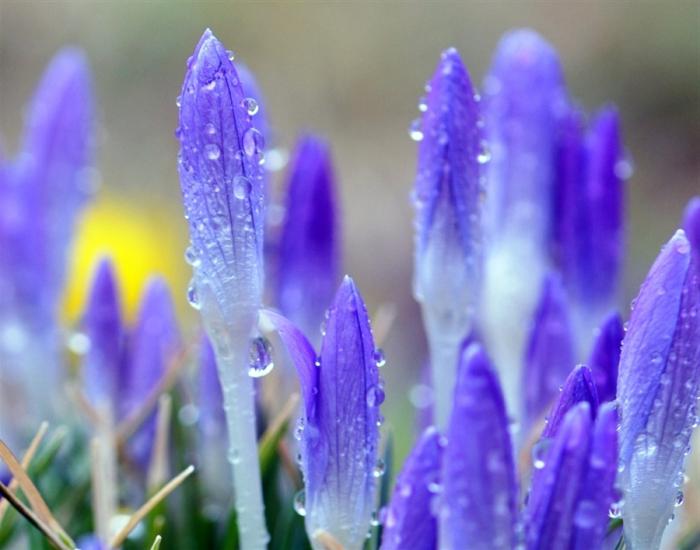Spring is an amazing time when everything comes to life after hibernation, when the
winter depression goes away
, everything blooms around, and the smile itself appears on the face. Perhaps that is why for a long time in Russia they love this time of year so much. Each writer and poet has a description of spring, but each one is permeated with life, love, lightness. And how else? After all, the sun shines fervently and brightly, spring drops pounded gaily and loudly, sparkles sparkled in the puddles of melted snow, the blue sky smiled. The rivers are ready to free themselves from ice captivity and make noise, run about their business. And how delicate light green leaves on the trees delight the eye, a velvet carpet of lush grass underfoot. So I want to run barefoot on it!
Signs of great-grandfathers
The signs of spring occupy a huge stratum in folk art; no other months attract so much attention as March, April and May. And it all starts on February 15, at Sretenie. According to popular belief, it is on this day that winter and spring meet, and it depends on who wins, whether the weather will please. Popular signs of spring claim that it is after this day that nature begins to awaken. And they meet spring in a month, on the day of Evdoha, March 14th. The women baked the “larks”, and the children called the young season with them.
Ancient beliefs advised that day to bury a pot of porridge in order to feed the earth, appease it for a plentiful harvest in the future. In general, with the fertility of the earth, with the productivity of the year, many signs of spring are associated. So, the yield of the coming year was judged by the large spill, by completely descending ice on the rivers. This portended the bounty of nature. Especially fruitful was the year when spring came late. Such a large number of signs associated with the harvest, due to the fact that our ancestors lived off fertile land. Therefore, they wondered at any natural phenomenon. Including in spring thunderstorms. Thunder from the south or east portended a good year, and from the west an unfavorable one. Lightning without thunder threatened drought. A bad harvest was also predicted with thunderstorms too early, when the trees had not yet had time to become leafy.

There was no hydrometeocenter at that time, and therefore the weather was predicted by the behavior of animals. Many of these signs of spring are justified and have a scientific explanation. For example, fast rain was determined by the croaking of frogs. They are very sensitive to the slightest changes in the atmosphere and croak a lot before the rain, but not loudly, as in dry weather, but hoarsely. Spiders were considered harbingers of rain if they went hunting in the morning. The thing is that during damp they do not appear, and before the rain there is no dew on the grass, and spiders can come out.
Signs of our time
Of course, in our time, folk signs have lost their original meaning. We can find out the weather forecast a month in advance, scientific developments allow increasing productivity. But still, the modern world has its own signs of spring. True, already humorous. In them, the arrival of this time of the year is heralded by the appearance of people in winter hats and sunglasses on the streets, delivery of gifts from seemingly indifferent people, unexpected attention to the opposite sex. This direction is not accidental. Indeed, in our time, spring is no longer associated with sowing fields, but with the advent of love.